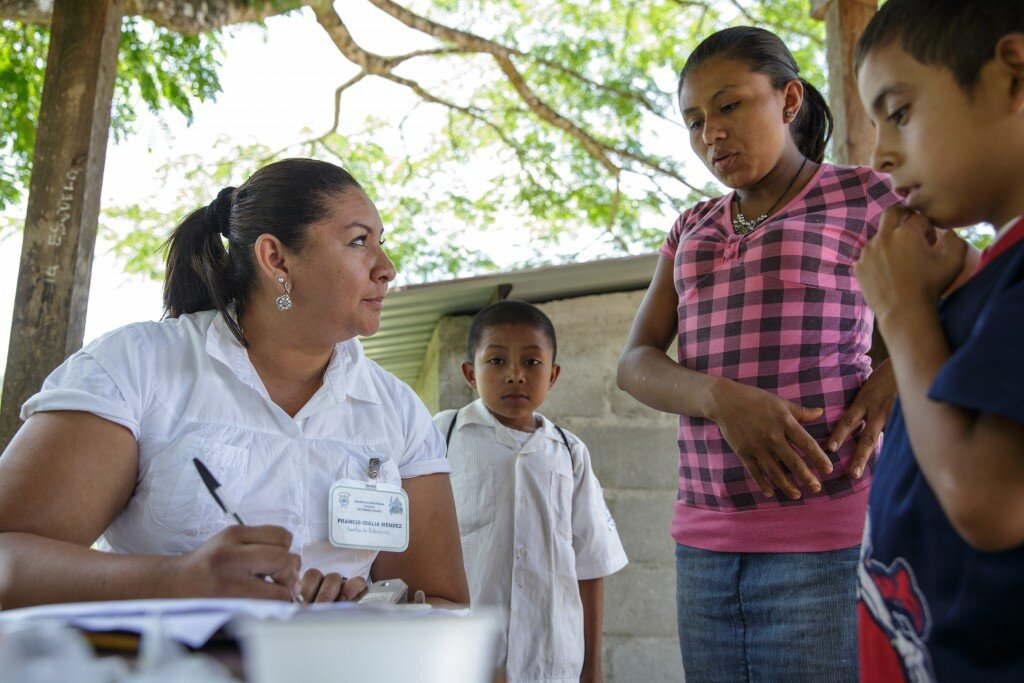I spent many of my teenage years living in Malawi, enjoying swimming in beautiful Lake Malawi. Wind on to age 30, and I was struggling to get pregnant. Eventually, following illness, I was diagnosed with schistosomiasis by a consultant and colleague at the Liverpool School of Tropical Medicine. I was told that I had probably been infected for a while and that it might be affecting my fertility. So I took praziquantel, the only available drug against the parasite, and soon after I was pregnant. Today my first born daughter is 10 years old. Whilst the links between urogenital schistosomiasis, sub-fertility and HIV have become increasingly well-established over my first born daughter’s life time, a combined and robust health systems action that brings together neglected tropical disease, sexual and reproductive health and HIV communities to address and scale up treatment for urogenital schistosomiasis is sadly lacking.
It is 20 years since the Beijing Women’s Conference and the International Conference Population and Development and the sexual and reproductive community have been taking stock on progress, challenges and future priorities. I attended a research agenda setting meeting on sexual and reproductive health, rights and gender at the WHO on 12th and 13th of January, where we discussed how to best decide priorities for action. Scaling up treatment for urogenital schistosomiasis is arguably a win-win.
The global burden of disease
Schistosomiasis is wide spread and there are two forms of disease, intestinal and urogenital. An estimated 600 million people are at risk of being infected and approximately 200-220 million people are living with schistosomiasis in Africa. Of the people infected with urogenital schistosomiasis it is thought that between about 100 and 120 million suffer from urinary and reproductive tract damage, which also impacts directly with HIV co-infection and sub-fertility in general. Typically many adolescent girls and women exhibit several symptoms in their lower genital tract where overt bleeding and unpleasant discharge, general discomfort and pain during sex can lead to low self-esteem, depression and stigma.
Peter Hotez estimates that globally there are between 67-200 million cases of urogenital schistosomiasis among girls and women. Hotez argues that between 20 million and 150 million girls are affected, possibly making it one of the most common gynaecological conditions in sub-Saharan Africa but unfortunately much under-reported. Urogenital schistosomiasis, as in my experience, also affects fertility and it is estimated to reduce a woman’s reproductive health capacity by up to 75%.
The links between urogenital schistosomiasis in women (female genital schistosomiasis) and HIV are well established. Writing in the Lancet, Stoever and colleagues argue that up to 75% of girls and women infected with female genital schistosomiasis develop often irreversible lesions in the vulva, vagina, cervix, and uterus, creating a lasting entry point for HIV and discuss how research in Zimbabwe showed that women with female genital schistosomiasis had a threefold increased risk of having HIV. In a recent review of the evidence Pamela Mbabazi and colleagues argue that “Studies support the hypothesis that urogenital schistosomiasis in women and men constitutes a significant risk factor for HIV acquisition due both to local genital tract and global immunological effects”.
Gender, equity and rights
There is remarkable overlap between the maps showing high HIV prevalence in Africa (particularly amongst women and adolescents girls) and those showing cases of female genital schistosomiasis. A complex interplay of biological, social and cultural factors means that young women are particularly vulnerable to HIV in sub-Saharan Africa. Gender norms also shape exposure to urogenital schistosomiasis, with women being particularly responsible for activities involving water in many communities (washing, cleaning, collecting water etc). Drawing on work from Ghana, Vlassoff and Manderson have shown that women interact with water significantly more often than men.
What to do?
Several tens of millions of praziquantel tablets are now donated each year by Merck-KGaA for mass drug administration campaigns as a cost-effective method to protect people from the urogenital schistosomiasis. Hotez argues that by preventing female genital schistosomiasis in sexually active women we have an innovative and timely opportunity to reduce and likely much reduce HIV transmission throughout many rural areas of sub-Saharan Africa.
But in infected communities treatment also needs to start early.
Stoever and colleagues argue that periodic and regular treatment with praziquantel from when children are first infected should prevent the development of genital lesions, which increase HIV risk and cause gynaecological problems. Treatment, however, may need to be started even earlier as the extent and burden of schistosomiasis in pre-school-aged children is being more fully described.
To make progress in this area we need joint action between the HIV, sexual and reproductive health and neglected tropical disease communities. Health workers and communities need more information on the multiple impacts of urogenital schistosomiasis and how it can be treated.
The lack of action to date on urogenital schistosomiasis clearly illustrates the importance of new partnerships and new approaches to scaling up strategies to address neglected tropical diseases. COUNTDOWN, a new initiative in Cameroon, Ghana and Liberia, will be paying close attention to the potential role of close-to-community providers such as drug distributors in providing an interface between communities and health systems. We will also evaluate how to deliver equitable drug delivery for schistosomiasis through the inclusion of preschool-aged-children, out-of-school-children and adults. The Director of COUNTDOWN is helping to co-organise a meeting in South Africa later in the month where several members of COUNTDOWN will also attend. It brings together world leaders in the field of schistosomiasis, HIV and paediatrics to present on the current state and future direction of research on female genital schistosomiasis.
COUNTDOWN is set to foster and to stimulate others in thinking of innovative ways of prompting a synergistic approach to neglected tropical diseases which crosses sectors and builds strength in national health systems.
If you would like to find out more follow us on or email .
This blog post was writtem by Sally Theobald, COUNTDOWN Consortium & Research in Gender and Ethics: Building stronger health systems (RinGs), and was originally posted on Cross-Talk: A Place to Share New approaches to Neglected Tropical Diseases.
Photo courtesy of .


